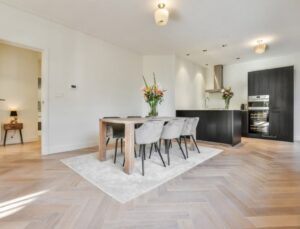Why is unbuilt architecture better?

Can you imagine a plot of land on a steep slope from a hilltop, which would have a bird’s eye view? Could there be a house that seemed like it could stretch towards the skies? Mumbai-based architect Yashwant Pitkar imagined one such in Panchgani, Maharashtra, for his client, a connoisseur, where like the wings of a bird in flight, it would provide unobstructed views to the lake and extend its arms towards the horizon. The house was never built. Yet it testifies to the possibilities that exist in imagination, beyond the operational needs of a built space.
Could a cemetery become a place for contemplation, for pause and ponder moments? New Delhi-based firm Henri Fanthome Office for Architecture designed a Catholic cemetery in Gurugram to be more than just a collection of tombstones. With terraced walkways and wall crypts with planted gardens, they drew out a landscape of “calm remembrance”, where “in the present chaos and impermanence of our existence, (this would be) a space to embrace and contemplate people’s own mortality”.
These are examples from nearly 54 projects across the country that have been compiled into a book titled India: Unbuilt Architecture. Self-published by Rajesh Advani, who anchors the web portal architecturelive.in, the 300-odd pages have been curated by Advani and Ruturaj Parikh of Studio Matter. With essays from nine academicians and architects, the book offers glimpses into projects that were conceptualised but never got built, either because these were competition entries or due to issues of feasibility and logistics.
Delhi-based Advani has been pursuing the idea of “unbuilt architecture” for the last four years, which he hoped would culminate into a travelling exhibition or an annual award. However, while neither picked up steam, the reality of a book seemed closer. He got on board Parikh, and together they called for entries. “We wanted to focus on civic or public buildings, to see how they capture ideas of democracy and urban space, and how competition projects, without the burden of site, can present the ambition of thought. The institutional projects are about human interaction with architecture, how it affects the environment, and how appropriate it is for construction and scale. Then there are projects that don’t have a site or programme but show how the idea can be stretched to fit different problems of urban or rural life,” says Parikh.
In his own unbuilt project, a proposal for the Indira Awas Yojana, for rural housing, Parikh and team have presented multiple configurations of home units, which can accommodate workshop spaces, courtyards and other auxiliary spaces, based on need. The idea is thus a “kit of parts” that can build an ecosystem.
“For some architects and students, an unbuilt project feels like a failure. However, through the book, our aim was to present the process, to say it is complete when a building is on the ground, but otherwise, we are in the in-between phase, which is as fertile. We asked our essayists to look at how the unbuilt affected them in their studio or area of work and as individual practitioners,” says Advani.
In his essay, Chennai-based architect Suprio Bhattacharjee writes about the “possibilities of anti-practice”, where the unbuilt makes room for the “yet to be experienced, yet to be discovered, yet to be lived in”, while Delhi-based architect Amritha Ballal argues that the unbuilt serves as an “incubator and instigator of our built reality”. One such project that provokes thought is the Delwara Community Toilets in Udaipur, Rajasthan, designed by Delhi-based vir.mueller architects. The need for a community toilet was felt by both the men and women of this village, which would also serve as a gathering space. The architects planned for an amla grove, courtyards, women’s toilets that could combine laundry, child care and socialising opportunities and choice of materials that was manageable by the stone craftsmen of the area.
The book thus takes one away from the “hegemony of vision”, which usually plagues architectural projects and makes one think about the act of building. Mumbai-based atArchitecture studio presents a home for marginalised children, where they have thought of everything from sleeping areas for the children to places for study and storage. What’s lovely is the playfulness of the space, where floors curve and roofs dip, where vertical nurseries for plants are possible and central courtyards allow light and air to stream in.
In his foreward, Bengaluru-based architect Prem Chandavarkar equates the unbuilt to a photograph, and “what is revealed in this photograph will demonstrate whether architecture is captured by an ideology of arrogance or an ethic of idealistic aspiration”. While many senior firms have presented their work, the joy of design seen in the younger firms is what brings this book alive. The “agility of their thought” is in stark contrast to the “complacency” of the older lot, says Parikh. In this lies the merit of the book, that it presents new hope for architecture in India.
(Source: Article by Shiny Verghese, originally published on Indian Express. Reproduced here to spread awareness.)








